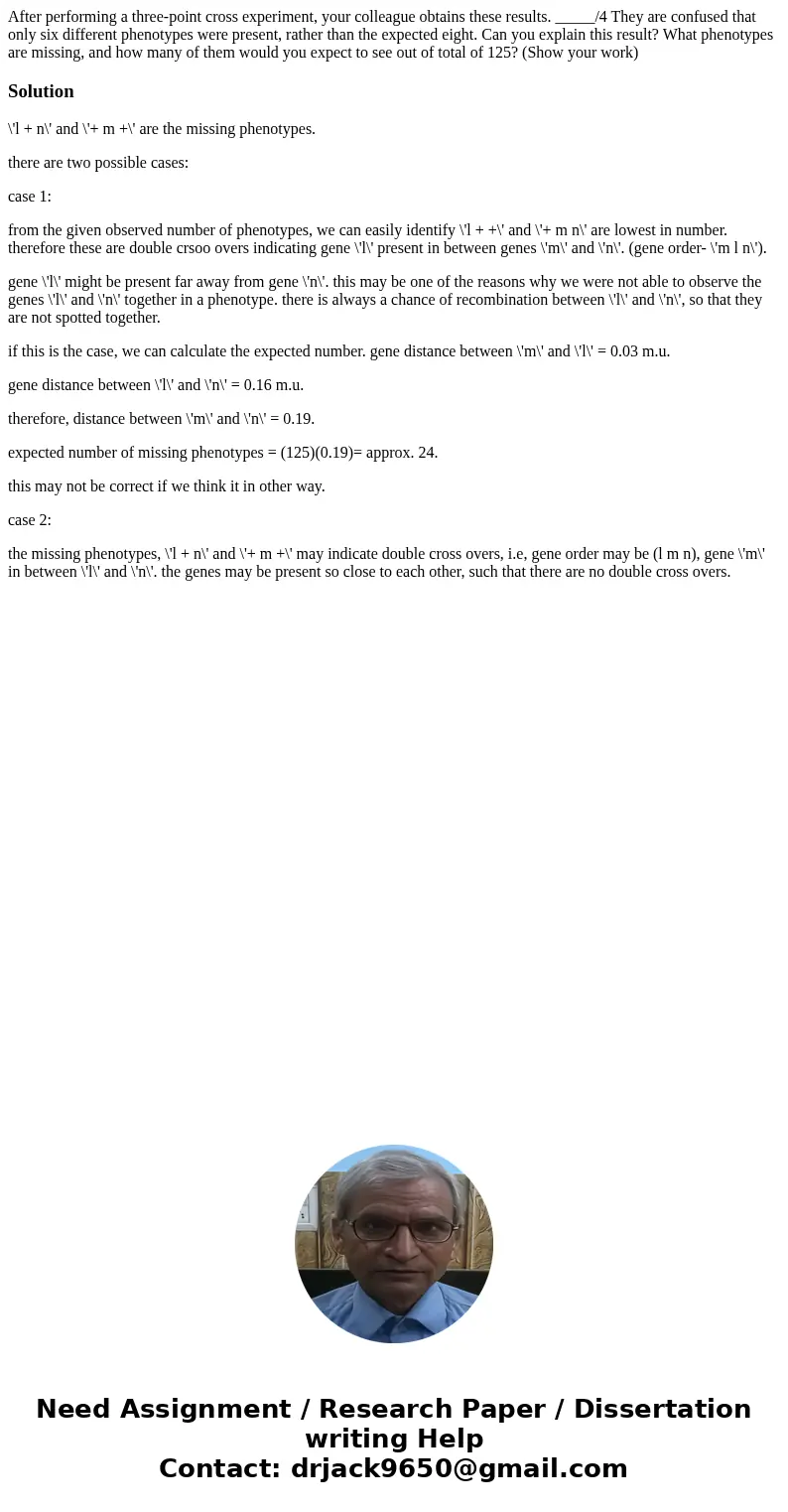After performing a threepoint cross experiment your colleagu
Solution
\'l + n\' and \'+ m +\' are the missing phenotypes.
there are two possible cases:
case 1:
from the given observed number of phenotypes, we can easily identify \'l + +\' and \'+ m n\' are lowest in number. therefore these are double crsoo overs indicating gene \'l\' present in between genes \'m\' and \'n\'. (gene order- \'m l n\').
gene \'l\' might be present far away from gene \'n\'. this may be one of the reasons why we were not able to observe the genes \'l\' and \'n\' together in a phenotype. there is always a chance of recombination between \'l\' and \'n\', so that they are not spotted together.
if this is the case, we can calculate the expected number. gene distance between \'m\' and \'l\' = 0.03 m.u.
gene distance between \'l\' and \'n\' = 0.16 m.u.
therefore, distance between \'m\' and \'n\' = 0.19.
expected number of missing phenotypes = (125)(0.19)= approx. 24.
this may not be correct if we think it in other way.
case 2:
the missing phenotypes, \'l + n\' and \'+ m +\' may indicate double cross overs, i.e, gene order may be (l m n), gene \'m\' in between \'l\' and \'n\'. the genes may be present so close to each other, such that there are no double cross overs.

 Homework Sourse
Homework Sourse